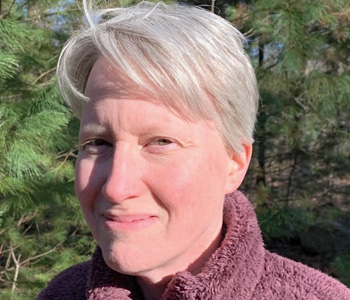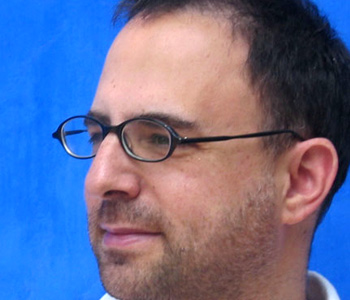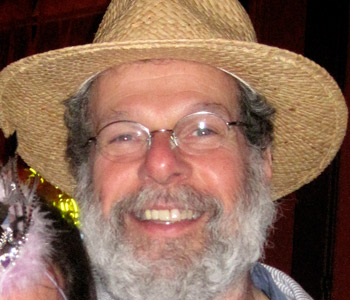Renée Beard
Living with Alzheimer’s: Managing Memory Loss, Identity, and Illness
NYU PRESS
336 pages, 6 x 9 inches
9781479889808
Living with Alzheimer’s is about what it is like to be evaluated, diagnosed, and to live with Alzheimer’s from the perspective of those most directly affected. I talked primarily with seniors, people over 65, who were in the early stages of Alzheimer’s disease (AD). Ultimately, this is a story about living with Alzheimer’s; that is, how life continues long after diagnosis.
Unfortunately, the majority of the challenges faced by the diagnosed individuals I spoke with were caused by cultural blindness and intolerance in contemporary US society. We have been socialized to mistrust people with dementia and, thus, assume they are incapable of navigating their own lives. As a result, we are reticent to meet them on their own terms and instead try to change them to conform to our narrow expectations of social interactions or outright dismiss them. This is based in a deep-seated ageism, the conflation of our brains and personhood in the western world, and bias against those who deviate from the normative expectations of social engagements and language.
My book draws on the narratives of those with memory loss themselves, something heretofore largely neglected in book-length projects within the social sciences and considered impossible in the public imagination. My respondents depict a keen awareness of their struggles and an impressive ability to manage their identities and interactions. Both of these are commonly assumed impossible or at least severely diminished in those affected by AD. My book also questions the utility and ethics of increasingly earlier diagnoses when definitive diagnosis does not exist, efficacious medications are lacking, and postmortem results suggest both false positives and negatives, that is, people are diagnosed who do not have it and others have the brain pathology but were never diagnosed.
Importantly, I also add to these first-person accounts the views of practitioners at specialty memory clinics and staff from the Alzheimer’s Association. The ability to triangulate rich data from the subjective experiences of “patients” as well as clinicians and staff from the Association is the foundation upon which I base my ultimate claim that AD is a social artifact. I am in no way suggesting that Alzheimer’s is fake, but rather socially constructed and/or created in specialty clinics and voluntary organizations by well-intended actors who operate under the constraints of the organizational norms and ethos where they work and live (as we all do).
I hope that people will read my book with a willingness to put themselves in the shoes of the respondents I spoke with, especially those living with Alzheimer’s, but also those professionals aiming to serve them. At the end of the day, I would like readers to walk away with a better understanding of our shared humanity in the plight of facing forgetfulness. If readers left being able to imagine a life with Alzheimer’s that was still worth living and better understood some of the complexities of diagnosing, treating and serving the affected population, I would deem the book a success.
I’ve always had an affinity for older people. My first job as a teenager was working in a nursing home where I met a woman who had what was then called “Oldtimers.” She was sequestered far away from the nurses’ station and all social spaces because staff and residents alike were convinced that she was “not there.” My experiences told me otherwise and that has stayed with me to this day. Through my undergraduate training, I was drawn to the sociology of aging and followed it through to a Ph.D. in medical sociology. This book is the logical conclusion of my doctoral research project translated for readers beyond my own subspecialty, updated, and including a wider. The primary themes of the book are ageism and the medicalization of memory loss as a specific example of how insidious ageism can be.
In the 1980s, Alzheimer’s disease went from an extremely rare disease found in 50-year-olds to a leading cause of death for older people and replaced what used to be a normal part of aging – senility (or Oldtimers). Since then, the primary topic of interest has been diagnostic tools to identify AD earlier and earlier and even before it is detectable by the average person. I argue that this is an example of medicalization that has not worked particularly well for affected parties. Over 100 years after first being described, we don’t know what causes it or how to classify it, efficacious medications do not exist, and a definitive diagnosis remains possible only upon autopsy.
The other primary theme is ageism. In a culture where people are valued according to youthfulness, social interaction is challenging enough for American seniors with keen memories. When strict normative expectations of communication, interaction and “reality” are also present, then the status of nonperson is ascribed to any individual who is deemed cognitively impaired. What I am arguing is that we – the well-intended public - are the problem. Our own cultural reticence translates too easily into individual unwillingness to join people with dementia where they are. Since we are socialized to believe dementia represents a particularly horrifying state, the biggest barrier to a meaningful life in spite of Alzheimer’s is the fear of unimpaired others. We would do well then, I believe, to learn from my respondents for whom life – while decidedly more challenging – is far from over.
I think the prologue does a particularly good job of depicting why people seek evaluation, how they feel during it, and most crucially, what can go wrong in the delivery of the diagnosis. While this example was an outlier in terms of the clinical approach depicted, it is an important lesson for all of us. Despite the best intentions, both clinicians and Association staff often act in ways that are not in the best interest of people seeking evaluation or diagnosed with AD.
I am torn between two sections, both being most important to get across: the grueling and dehumanizing experiences of being evaluated (chapter 4) or the more positive account of how people ultimately resist being conflated with their diagnosis (chapter 5). Being evaluated is troublesome for what I call “potential patients” because they are deemed suspect by the very act of seeking evaluation. Yet, so many of my respondents did so simply to get “a baseline” or be told that their forgetfulness was normal or “age-related.” This presumed incompetence was disturbing and distracting for respondents, who felt the cognitive workup amounted to a “degradation ceremony” whereby they were left “socially demoted” essentially upon receipt of the diagnosis. After the initial shock of diagnosis wore off, the reaction to the news was far less dramatic than we might believe it to be. Given their advanced age and shared positive outlook, the biggest barriers to a meaningful life with AD ended up being – in the views of my respondents – the assumptions that generally well-intended social others made of their inability to engage or find value in life any longer. So, on top of the biological realities of dementia, my respondents had the arduous task of also managing the impressions of everyone else, that is, fighting to be seen as “still there” and worthy of interaction rather than simply pitied and dismissed.
So, being diagnosed normalizes awkward behaviors and removes personal blame, which is great, but it also demands identity management to avoid the self-fulfilling prophesy of an Alzheimer’s diagnosis at a time when the “zombie trope” serves as a powerful cultural metaphor for the condition. Part of the problem is that we conflate AD with the late stages, when most diagnosed individuals will die of something else long before they forget to breathe and swallow. The vast majority of people diagnosed with AD do not die from it, and when you take false positives discovered upon autopsy into account, the numbers are even lower. So, while on average they do ultimately maintain meaning in their lives, they do so in spite of the obstacles we present them.
The reason I think these chapters are important is that I think they offer an important and much-needed counter-narrative to the pejorative social assumptions of “life with AD” and show the persistent humanity that I would hope elicits compassion in readers.
I want to increase awareness of the bare consequences of these particular examples of medicalization and ageism. I hope to give academics, practitioners, people with AD and their families – and all of us – a better idea of what life with AD is really like. It doesn’t need to be this way and I hope this book helps me do my small part in changing the way society treats people with AD. We lack a critique of contemporary memory-centeredness and the lived consequences of it. Such introspection has much to say about future improvements in the way people in general and the medical system in particular treat individuals with memory loss. By showing how experiences of dementia are larger than tales of tragedy can capture, I am questioning the very legitimacy of the Alzheimer’s Industrial Complex itself.
Those who are currently seniors and/or live with dementia – and all of us as we ourselves age – would be best served by removing our tendency to universalize all aging experiences. Such homogenizing in such a gendered, race-based and class-divided society is not only a mistake but tolerates neglect of the most deeply disenfranchised among us and ignores the need for meaningful change on the societal level. I see my book as an appeal to broader acceptance of difference, concerning experiences of aging and Alzheimer’s, but also in general. Diagnosed individuals fight hard to maintain a sense of social worth. If we are going to label people with AD earlier and earlier, then at the very least in recompense we should make sure that the social discourse as well as the infrastructure set up to serve them (both in the early phase but particularly in the later stages) be based upon their experiences, views and values with an appreciation for their unique social and relational contexts.
If we continue to proceed without caution, then we might destroy the precious little space within which we as modern humans can age meaningfully. My book offers a timely counterpoint. Through interrogating our societal horror of Alzheimer’s, and aging – dare I say death - more broadly and showing more accurate portrayals of life with the condition, I hope the counter-narrative offered in my data advances global, public and sociological understandings of what has been framed as the most dreaded disease of our time. If we want to bring some humanity to memory loss, then it would behoove us to remember what Mrs. W, a 72-year-old widow, told me a year after being diagnosed: “I’m still the same person I’ve always been. It’s just that now I’m me with Alzheimer’s.” And, at the end of the day, who among us would want to be seen any differently?




We don't put paywalls. We don't distract you with ads. We don't sell your data.
Please help to keep this running!